
Introduction to UK Road Signs
The Importance of Understanding Road Signs
Road signs are vital tools for ensuring the safety and efficiency of transport on roads across the UK. Every driver, cyclist, and pedestrian must understand these signs to navigate the roads safely and effectively.
This understanding begins with recognising the symbolism and intent behind each sign. By learning road signs, individuals can make informed decisions, thus reducing the risk of accidents and ensuring a smoother flow of traffic.
Overview of Different Categories of Road Signs
In the UK, road signs are categorised into several types, each serving a specific purpose. The main categories include warning signs, regulatory signs, information signs, and direction signs.
Each category plays a crucial role in guiding and informing road users about different aspects of the road environment and the behaviour expected of them.
This segmentation helps in quick recognition and understanding, which is essential for maintaining road safety.
Legal Relevance of Road Signs in The Highway Code
The Highway Code incorporates all the rules and guidelines related to road signs in the UK. Understanding and complying with these signs is not just a matter of good practice but a legal requirement.
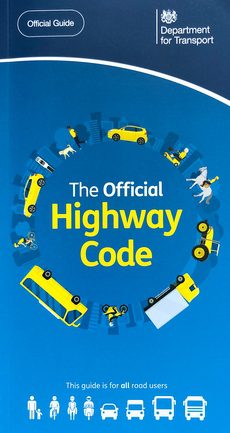
Non-compliance can lead to fines, penalty points, or more severe legal consequences. The Highway Code explains each sign in detail, providing road users with the knowledge needed to navigate the roads lawfully and safely.
Warning Signs
Identifying Common Warning Signs
Warning signs are designed to alert drivers about potential dangers ahead. They are usually triangular with a red border, making them easily identifiable.
Common warning signs include those for sharp bends, steep hills, crossroads, and schools. Recognising these signs and understanding what each implies is crucial for safe driving.
What Each Warning Sign Indicates
Each warning sign has a specific message. For example, the sign for a sharp bend alerts drivers to slow down, while a crossroad sign advises drivers to be prepared to stop or give way.
Other signs might indicate the presence of pedestrians, animals, or changes in road conditions like slippery surfaces.
Understanding what each sign indicates allows drivers to anticipate and react appropriately to various road situations.
Responding Appropriately to Warning Signs
The correct response to a warning sign can often prevent accidents. For example, upon seeing a sign indicating a steep descent, a driver should reduce speed and shift to a lower gear if necessary.
Similarly, a sign warning of an upcoming pedestrian crossing requires the driver to slow down and be prepared to stop. Each warning sign requires a specific response, tailored to the hazard it is warning about.



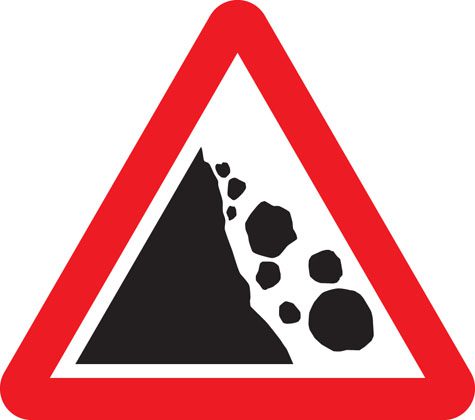
Regulatory Signs
Understanding Prohibitory and Mandatory Signs
Regulatory signs are crucial for managing traffic and ensuring that road rules are followed. These signs can be broadly classified into two categories: Prohibitory signs, which tell road users what they must not do, and mandatory signs, which specify actions that must be taken.
- Prohibitory signs are generally circular with a red border and no entry sign, indicating actions like no entry, speed limits, or no overtaking.
- Mandatory signs, on the other hand, are usually circular with a blue background, instructing road users to proceed in a specific direction or perform specific actions like turn left, yield, or keep right.
The Consequences of Not Following These Signs
Ignoring regulatory signs can lead to dangerous situations and accidents, which not only pose a risk to the violator but also to other road users.
The consequences of such violations include legal penalties such as fines, points on the driver’s licence, and in severe cases, disqualification from driving.
These penalties are designed to enforce compliance with road safety norms and ensure that the roads remain safe for everyone.
Examples of Regulatory Signs and Their Meanings
Examples of regulatory signs include the No Entry sign, which prohibits entry to all vehicles; the Speed Limit sign, which specifies the maximum speed allowed; and the One-Way Traffic sign, which dictates the direction in which the traffic must flow.
Understanding the meaning behind each regulatory sign is essential for safe and effective driving. Each sign has a direct impact on how drivers navigate the road, influencing everything from vehicle speed to driving direction.
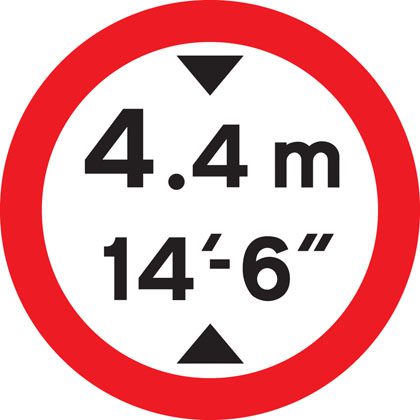
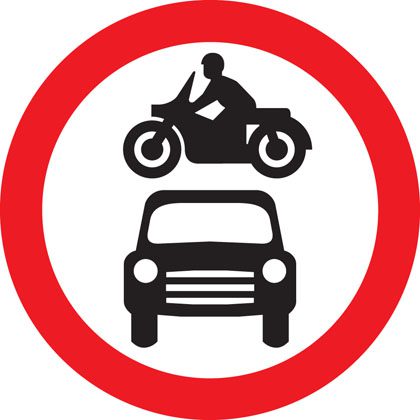

Information Signs
Types of Information Signs on UK Roads
Information signs in the UK are designed to provide necessary data that helps drivers understand road layouts, directions, and various regulations that do not fit into the typical warning or regulatory categories.
These signs can range from signs indicating a bus lane, a pedestrian zone, or parking information to more complex signage showing the flow of traffic around a roundabout or through divergent lanes.
The common types include service signs (indicating the nearest hospital or police station), route markers, and location signs.
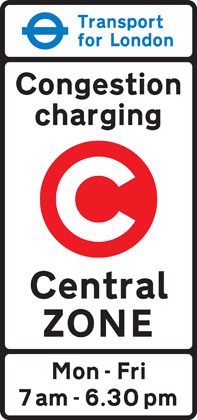
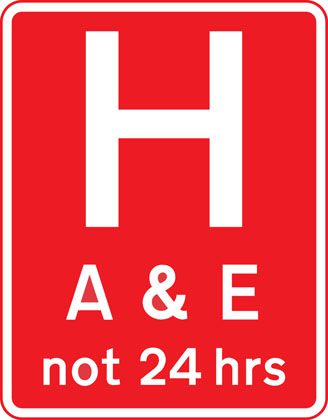
Image source: Open Government Licence v3.0
How These Signs Guide Drivers
Information signs serve the critical function of guiding drivers by providing clear and concise information at crucial points along the road.
For example, signs indicating lane closures ahead prepare drivers to merge lanes safely, while signs showing junction layouts ahead help drivers position themselves correctly in complex road networks. This guidance is crucial for maintaining traffic flow and ensuring driver safety.
The importance of information signs cannot be overstated when it comes to effective navigation, especially in unfamiliar areas.
These signs provide essential information that aids in decision-making, allowing drivers to anticipate upcoming conditions and adjust their route as necessary.
They are particularly useful in urban settings where roads may be densely populated with various navigational challenges.
Rectangular Road Signs
Blue Rectangles
Blue rectangular signs are primarily used for informational purposes, specifically to indicate various facilities or services available to road users.
These signs often provide information about motorway services, parking areas, and routes for bicycles and buses.
The blue background makes them easily recognizable and signifies that the information is intended to help drivers make decisions about their journey without enforcing any legal obligations.

Green Rectangles
Green rectangles are used on primary routes to provide direction and distance information. They help drivers navigate by indicating destinations along with the distance to them.
These signs are essential for long-distance travel, guiding drivers towards major cities or key landmarks, and are fundamental in ensuring smooth traffic flow on fast-moving roads.
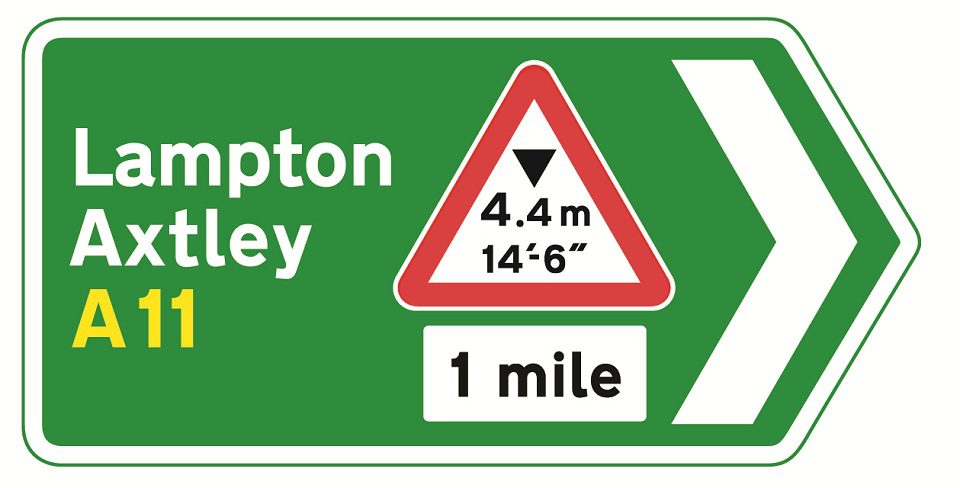
White Rectangles
White rectangular signs are used for directions on non-primary roads and also provide various other instructions or information relevant to a particular road or area.
These signs can include instructions like parking regulations, directions to local amenities, or road layouts. Their versatility makes them very common, which means understanding their messages is crucial for local navigation.
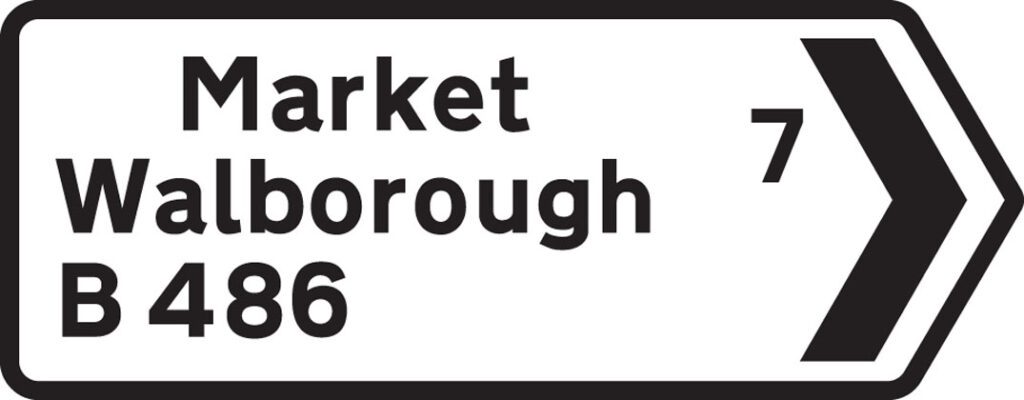
Brown Rectangles
Brown rectangular signs are tourist information signs. They direct travellers to tourist attractions, historical sites, and leisure facilities.
These signs are particularly useful for visitors and play a significant role in promoting local and national heritage, ensuring that drivers and other road users can find cultural and natural landmarks with ease.
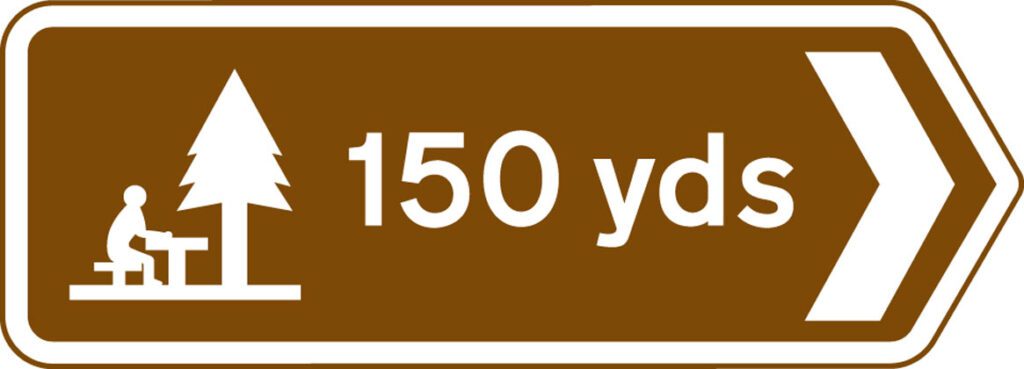
Yellow Rectangles
Yellow rectangular signs are used for warnings about temporary conditions such as road works, diversions, or temporary traffic conditions.
These signs are vital for maintaining safety by informing drivers of potential hazards or changes in normal traffic conditions ahead, allowing them to adjust their driving accordingly.

Exceptions to the Rules
The Give Way Sign
The Give Way sign, uniquely triangular with a red border and white background, is one of the key exceptions in the UK road sign system.
It instructs drivers to yield the right-of-way to traffic on a major road and is crucial at junctions where stopping is not necessary unless traffic conditions require it.
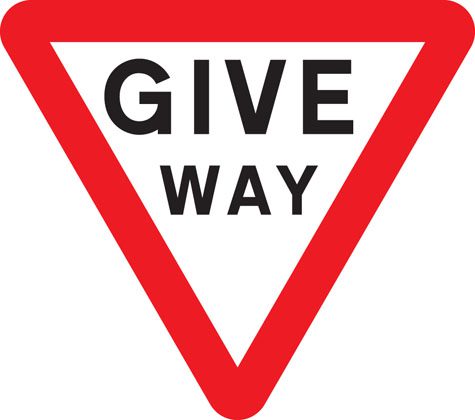
The Stop Sign
Another critical exception is the Stop sign, which is octagonal with a red background and white lettering. This sign is used when there are visibility or safety concerns at an intersection.
It mandates a complete stop at the sign before proceeding, ensuring drivers check for oncoming traffic or pedestrians.

National Speed Limit Sign
The National Speed Limit sign is a unique symbol showing a single black diagonal stripe on a white circle with a red border.
This sign indicates that the speed limit for the road returns to the ‘national speed limit’, which varies depending on the type of vehicle and the road on which it is travelling.
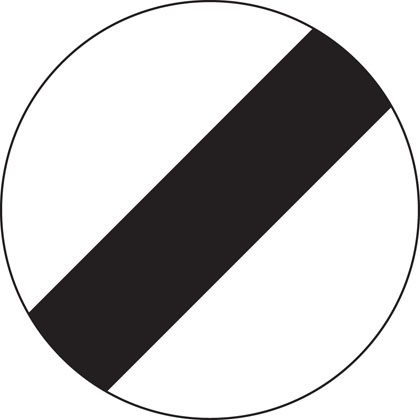
Variable Message Signs
Variable message signs are electronic signs that can change the message displayed based on current traffic conditions or events.
These signs provide real-time information about traffic delays, accidents, road closures, or weather conditions.
They are an exception because they are flexible and can convey a wide range of messages that adapt to immediate road conditions.
Road Markings and Their Meanings
Different Types of Road Markings
Road markings are used to convey a range of information to road users through lines, patterns, and text painted directly on the road surface. Common types include:
- Solid lines: Generally indicate restrictions, such as no passing zones.
- Dashed lines: Typically indicate where passing is allowed or to denote traffic lanes.
- Chevrons: Used to separate traffic lanes or to highlight lane merges and diverges.
- Box junctions: Criss-cross yellow lines indicating that entering the area is prohibited unless the exit is clear.
- Zebra crossings: Broadly spaced white stripes where pedestrians have right of way.
Understanding the Rules Associated with Road Markings
Each type of road marking has specific rules associated with it, defined in The Highway Code. For example, vehicles must not cross solid white lines unless overtaking a stationary vehicle, or when entering adjoining premises or a side road. Understanding these rules is crucial as they directly impact driving decisions and legal compliance on the road.
How Road Markings Complement Road Signs
Road markings work in tandem with road signs to provide a complete and coherent system of guidance and information for road users.
While road signs can alert drivers to upcoming conditions from a distance, road markings give precise instructions at the exact point of action.
This combination helps to reinforce messages and ensure consistent understanding of the driving environment, thereby enhancing safety and efficiency on the roads.
How Road Signs Feature in the Driving Test
In the UK driving test, an understanding of road signs is crucial not only for the theory component but also for the practical driving test.
The “Show Me, Tell Me” part of the driving test examines a learner driver’s knowledge about how to operate a vehicle safely and how to interpret road signs.
Candidates must be able to identify and explain various road signs and their implications for driving, which is critical for demonstrating their readiness to drive independently.
Sample ‘Show Me, Tell Me’ Questions on Road Signs
Here are some sample questions that might be asked in the “Show Me, Tell Me” section of the driving test related to road signs:
- Tell me how you would check that the direction indicators are working. You don’t need to exit the vehicle.
- Show me what the brake warning light looks like and explain what you would do if it stays on while driving.
- Tell me what the rules are for following a diversion sign during road works.
- Show me how you would find information about the maximum speed limit of the vehicle you’re driving.
These questions require the candidate not only to show or tell how they would perform certain checks but also to explain the significance of certain road signs encountered during driving.
Best Practices for Memorising Road Signs for the Test
To effectively prepare for these questions, candidates should:
- Visual Learning: Use flashcards with pictures of road signs and their meanings.
- Practice Tests: Take advantage of online practice tests that include road sign identification.
- Discussion and Explanation: Discuss various road signs with a driving instructor or a fellow learner to better understand their practical implications.
Practical Tips for Learning and Remembering Road Signs
Techniques for Studying Road Signs
Learning road signs can be made easier with several techniques:
- Grouping Similar Signs: Group similar signs together to learn them by category, such as warning signs, regulatory signs, and informational signs.
- Use of Mnemonics: Develop mnemonics to remember the specific rules associated with each sign.
- Repetition: Regularly reviewing the signs helps to reinforce memory and understanding.
Utilising Technology and Apps to Learn Road Signs
Several apps and technological tools are available to help learners master road signs:
- Driving Theory Test Apps: These apps provide interactive ways to learn and practice road sign identification.
- Virtual Reality (VR) Driving Simulators: These can offer a realistic experience of encountering road signs while driving, enhancing the learning process.
- Online Flashcards: Digital flashcards available on various educational websites can be a handy tool for quick revision.
Importance of Regular Practice and Observation While Driving
Regular practice and observation are key to mastering road signs:
- Practical Experience: While driving, make a habit of identifying and explaining road signs aloud to reinforce their meanings.
- Observational Learning: When travelling as a passenger, observe and discuss road signs with the driver to enhance your understanding.
- Consistent Review: Regularly revisit the road signs and their meanings, especially if long breaks occur between driving lessons.
Frequently asked questions
Circular road signs in the UK are generally used for giving orders. Signs with a red border tell you what you must not do (e.g., speed limits), whereas blue circles mostly give positive instructions, such as the mandatory direction one must travel.
Triangular road signs are warning signs designed to alert drivers about potential hazards ahead, such as sharp bends or merging traffic from the side. They are meant to help drivers prepare for possible changes in road conditions or traffic behaviour.
Rectangular road signs provide information or directions. Depending on their colour, they can show directions (green for primary routes, white for non-primary routes), traffic regulations like parking zones (blue), or tourist information (brown).
Mandatory signs, which instruct you to carry out an action, are usually blue with white symbols or text. Prohibitory signs, which restrict or prohibit certain actions, generally have a red circle with a line through it over a black symbol.
A red ring or circle typically means that something is prohibited. For example, if it encircles a number, it indicates a speed limit. If it’s around a symbol, such as a vehicle or pedestrian, it indicates that the depicted action or entry is prohibited.
Yes, failing to comply with road signs can result in fines, penalty points on your driving licence, and in severe cases, disqualification from driving. This is because road signs are legal indications of road rules that must be followed.
If you encounter a road sign that is damaged, obscured, or otherwise unreadable, it’s advisable to drive cautiously and adhere to the general road rules. You should also consider reporting the sign to the local authorities so it can be fixed or replaced.
Road signs in the UK are maintained by local highway authorities. They are responsible for ensuring that signs are clearly visible, correctly positioned, and in good condition.
Yes, temporary road signs are used during road works, special events, or in response to temporary hazards. They usually have a yellow background and must be obeyed just like permanent signs.
Reflective road signs enhance visibility at night or in poor weather conditions. This reflective material ensures that the signs can be seen clearly, aiding in safer driving during all times and conditions.


